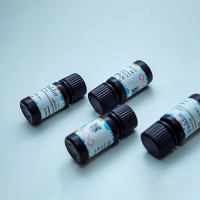识别和表征无义介导的mRNA降解过程中的序列模式
互联网
2089
摘要
In both prokaryotes and eukaryotes, nonsense mutations in a gene can enhance the decay rate or reduce the abundance of the mRNA transcribed from that gene, and we call this process nonsense-mediated mRNA decay. We have been investigating the cis-acting sequences involved in this decay pathway. Previous experiments have demonstrated that, in addition to a nonsense codon, speci?c sequences 3' of a nonsense mutation, which have been de?ned as downstream elements, are required for mRNA destabilization. The results presented here identify a sequence motif (TGYYGATGYYYYY, where Y stands for either T or C) that can predict regions in genes that, when positioned 3' of a nonsense codon, promote rapid decay of its mRNA. Sequences harboring two copies of the motif from ?ve regions in the PGK1, ADE3, and HIS4 genes were able to function as downstream elements. In addition, four copies of this motif can function as an independent downstream element. The sequences ?anking the motif played a more signi?cant role in modulating its activity when fewer copies of the sequence motif were present. Our results indicate the sequences 5' of the motif can modulate its activity by maintaining a certain distance between the sequence motif and the termination codon. We also suggest that the sequences 3' of the motif modulate the activity of the downstream element by forming RNA secondary structures. Consistent with this view, a stem-loop structure positioned 3' of the sequence motif can enhance the activity of the downstream element. This sequence motif is one of the few elements that have been identified that can predict regions in genes that can be involved in mRNA turnover. The role of these sequences in mRNA decay is discussed.
Identification and Characterization of a Sequence Motif Involved in Nonsense-Mediated mRNA Decay
SHUANG ZHANG,MARIA J. RUIZ-ECHEVARRIA,YONG QUAN, AND STUART W. PELTZ
Department of Molecular Genetics and Microbiology, University of Medicine and Dentistry of New Jersey, Robert Wood Johnson Medical School,1 and The Graduate Program in Microbiology and Molecular Genetics, Rutgers University,2 Piscataway, New Jersey 08854







